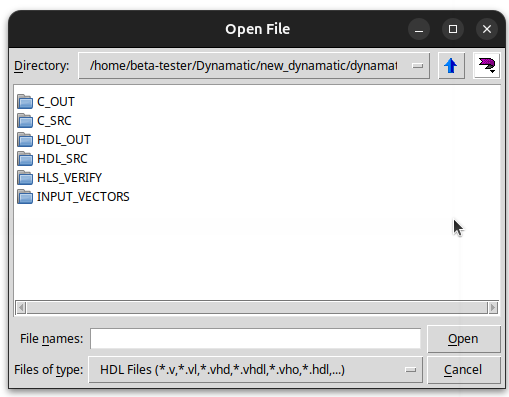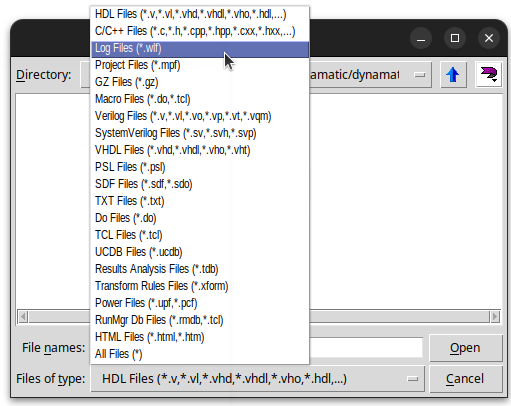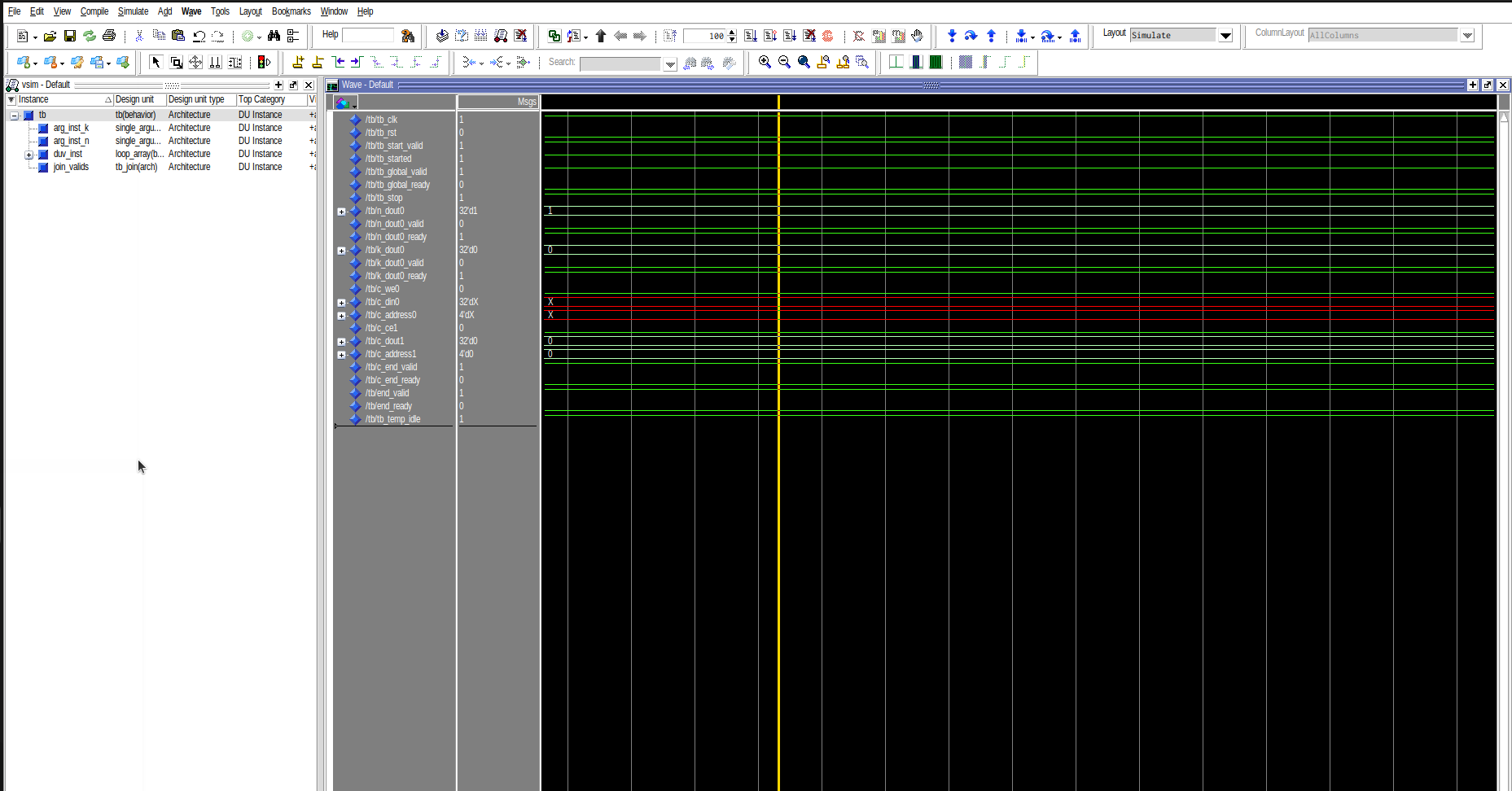Verifying the Generated Design
Circuits generated by Dynamatic are tested against the original C implementation to ascertain their correctness using the simulate command. To gain a good understanding of the quality of the generated circuits, users can explore the files generated by this command and/or use the interactive dataflow circuit visualizer to have a more visual assessment of their circuit.
This document focuses on the content of the out/sim directory and helps the user understand the relevance of this content in assessing their circuits.
C-RTL Cosimulation
Dynamatic has a cosimulation framework that allows the user to write a testbench in C code (the main function). To take advantage of this, you must ensure that you:
- Include the
dynamatic/Integration.hheader - Create a main function where your test inputs will be instantiated
- Make a function call to the function under test in the main function using the following syntax:
CALL_KERNEL(<func_name>, <arg1>, <arg2>, ..., <argN>);. The values of the arguments passed to the function (i.e.,<arg1>, <arg2>, ..., <argN>) will be used internally by our cosimulation framework as test stimuli.
The simulate command runs a co-simulation of the program in C and the HDL implementation generated by Dynamatic on the same inputs.
Cosimulation Results And Directories
The HLS_VERIFY/ directory and report.txt file are the most interesting outputs of the cosimulation.
HLS_VERIFY/
Contains
- The results of the waveform transitions that occured during the simulation, stored in a log file,
vsim.wlf, which can be opened in ModelSim/Questa as shown below:- Open ModelSim/Questa
- Click on the
Filetab at the top left of your window and selectOpen...
- Navigate to the
out/sim/HLS_VERIFYdirectory in the same directory as your C kernel

- Change the
Files of type:option toLog Files(*.wlf)and selectvsim.wlf
- Play around with the waveform in ModelSim

tip
The vsim.wlf file is also used by the interactive visualizer uses to animate the circuit using the Godot game engine.
- ModelSim information
- default settings
- library information to configure the simulator
- A script to compile and run the HDL simulation.
- A transcript of all commands run during the simulation.
- Testbench information
- optimization data
- temporary compilation data
- temporary message logs
- library metadata
- library hierarchy and elaboration logic
- dependency listing
report.txt
The report file gives information on the HDL simulation in ModelSim/Questa as well as some runtime and clock cycle information. If simulation fails, this file will also contain error logs to help the user understand the cause of failure.
Other Cosimulation Directories
The following directories contain information used to run the simuation:
1. C_SRC
Contains a copy of the C source file under test as well as any included header files. These will be used to compile and run the C program using a regular C compiler.
2. HDL_SRC
Contains a clone of the HDL directory created by the write-hdl command plus the addition of a testbench file that passes the inputs from the main function.
3. INPUT_VECTORS
Contains a list of .dat files for each input declared in the main function. These are passed to the C and HDL files during the co-simulation.
4. C_OUT
Contains the results of compiling and running the C program stored as .dat files for every output.
5. HDL_OUT
Contains the results of running the HDL simulation of the program in ModelSim/Questa stored as .dat files for every output.
Dynamatic compares the files in C_OUT and HDL_OUT to determine whether the HDL code generated does what the C program was intended to do.